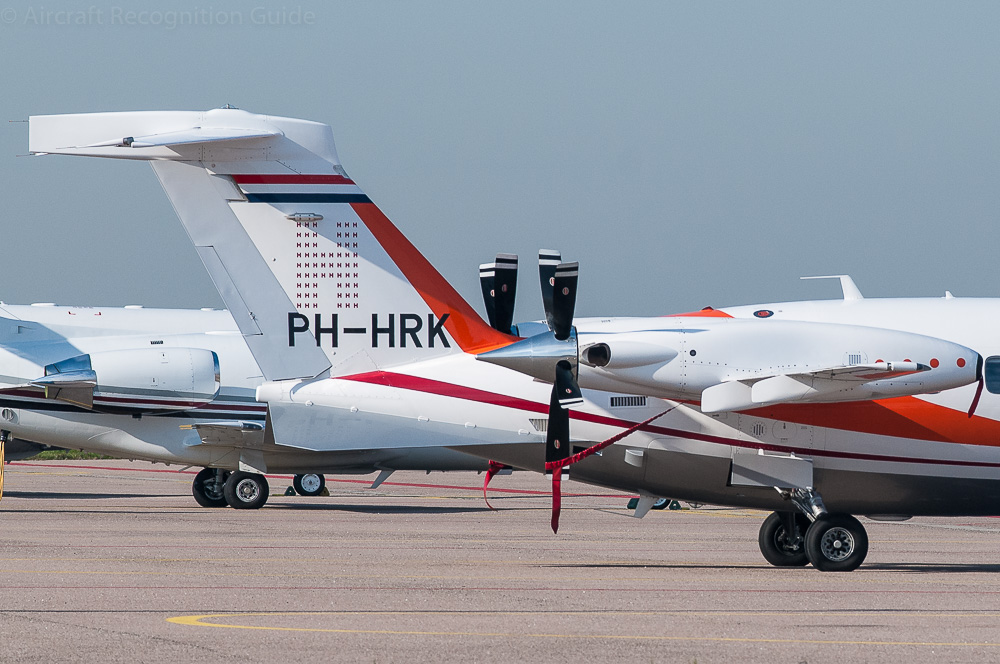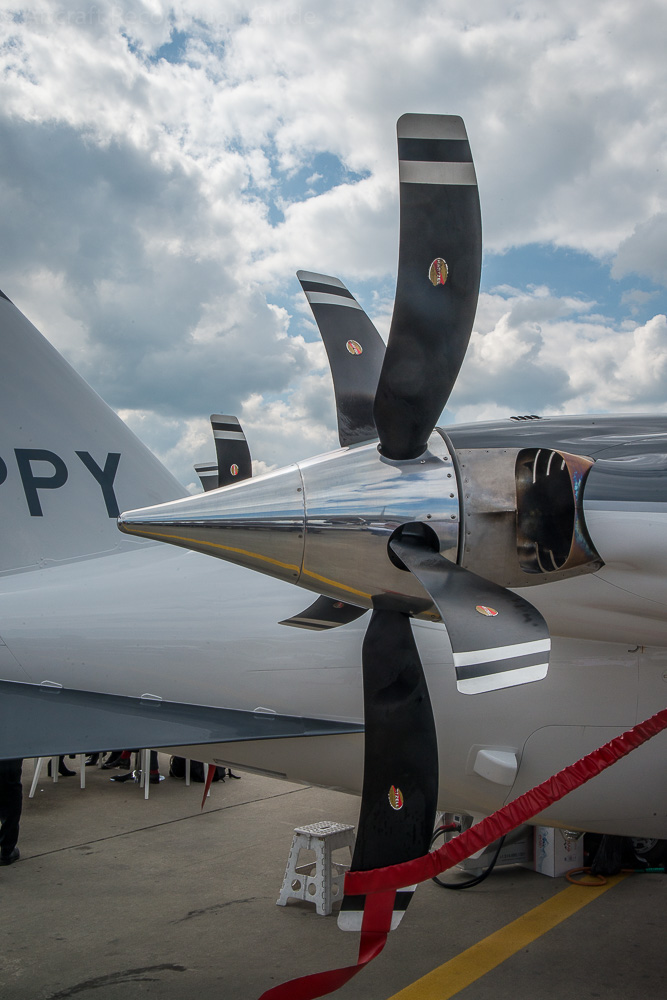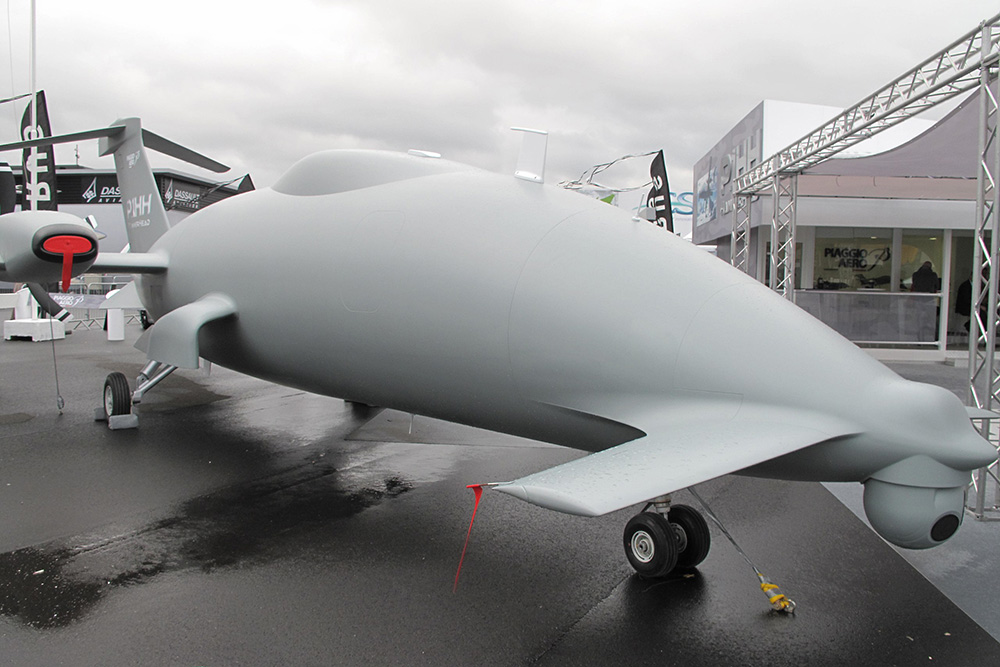
Piaggio P180
The P180 was originally developed by Piaggio together with Gates, then manufacturer of the Learjet. It was known as GP180 then, in a time that the corporate users appeared ready for high speed turboprop aircraft. Indeed the P180 is one of the fastest propeller aircraft around.
In appearance, the Piaggio P180 is unlike any other aircraft. It has a three-surface configuration, with wings straight through the fuselage, canard wings attached to the nose and regular horizontal stabilisers (in the form of a T-tail). The fuselage has about the shape of a wing, with a flat bottom and a round top. The engines are located in the wings, driving pusher props. They give the Avanti its distinctive sound in approach or take-off.
Different versions
The different versions of the P180 can be recognised by:
- the presence of winglets
- the shape of the props
- the presence of windows
P180 Avanti & Avanti II
The original version lacks winglets and has straight propellers (see photo above). Compared to the Avanti the Avanti II has improved avionics.
The Italian military use the P180M, as a general VIP/utility aircraft, and the P180RM, for calibration of radio beacons.
P180 Avanti Evo
The Avanti Evo has curved props and small winglets, even futher increasing its maximum speed, while at the same time reducing the noise.
P1HH Hammerhead
Using the Avanti II frame Piaggio created its own unmanned aerial vehicle, which it called the Hammerhead. Of course no windows are required so it has no. It has a dome on top of the fuselage and multiple sensors. Another difference it is wingspan: that of the P1HH is somewhat bigger.
The most obvious feature of the P1HH Hammerhead is the lack of windows. Also it has a dome on top of the fuselage and multiple sensors. (photo: Tangopaso/WikiMedia)
Confusion possible with
Beechcraft Starship
Like the Avanti the Beechcraft Starship has an unusual configuration. However the Starship has a true canard configuration, while the Avanti is a three-surface aircraft, with a regular horizontal stabiliser. Also the Beech has vertical stabilisers at the wingtips.
Avtek 400
Like the Avtek 400 the Avanti has an unusual configuration. However the Avanti is a three-surface aircraft, with a regular horizontal stabiliser (T-tail). The canard is placed at the nose. The Avtek has a true canard configuration. (photo: Peter Davis)







